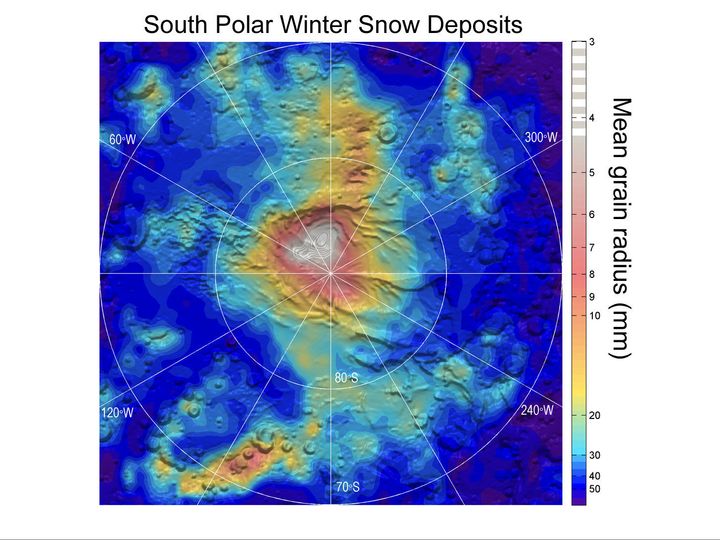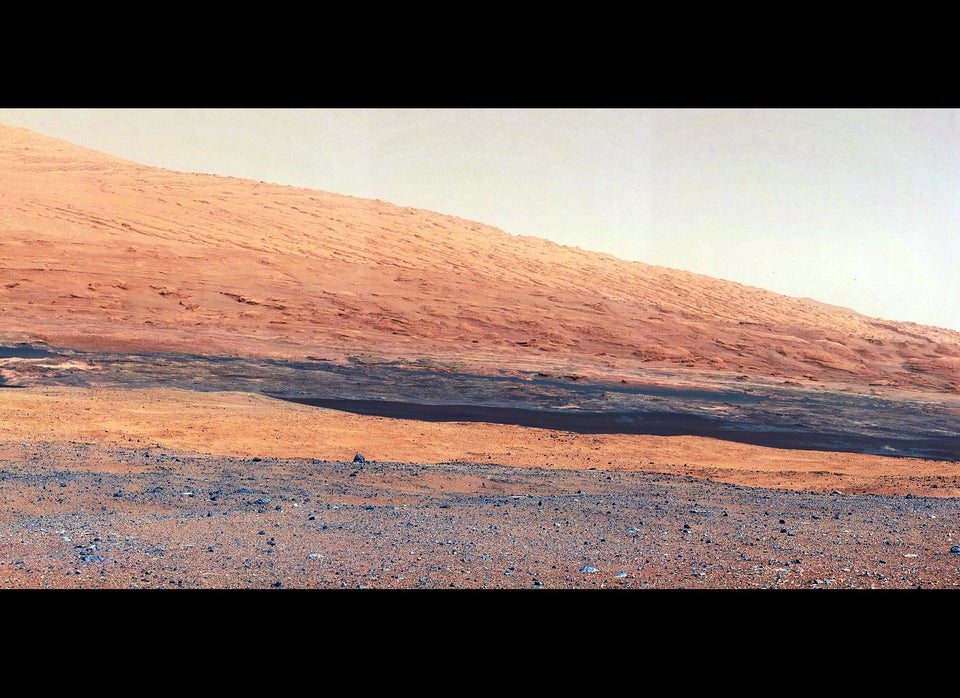
Earth wasn't the only planet that was pounded with snow this past winter. New data from the Mars Reconnaissance Orbiter indicates that the Red Planet experienced "dry ice" snowfall around its south pole.
While Mars received nowhere near the amount of snow many northeastern states did in October, its "dry ice" snow was definitely a lot colder.
For normal snowfall, temperatures of 32 degrees Fahrenheit or lower are usually required. But on Mars, "dry ice" snow only accumulates in minus 193-degree-Fahrenheit conditions, according to NASA scientists.
Mars is the only known planet in the solar system with the atmospheric conditions capable of producing this extremely cold carbon dioxide snowfall.
"These are the first definitive detections of carbon dioxide snow clouds," Dr. Paul Hayne of NASA's Jet Propulsion Laboratory, the study's lead author, said in a written statement. "We firmly establish the clouds are composed of carbon dioxide -- flakes of Martian air -- and they are thick enough to result in snowfall accumulation at the surface."
Though the Mars Reconnaissance Orbiter findings are new—forthcoming in the Journal of Geophysical Research—snow on Mars is something scientists have studied for many years.
In 2008, NASA's Phoenix Lander detected snowfall in the planet's northern region. Earlier this year, researchers suggested that Martian snow is smaller than the big fluffy flakes we often see here on Earth, estimating the flakes are roughly the same diameter as a human red blood cell.
However, with as the new data shows, snow on Mars is not only smaller, but much, much colder than snow on Earth.

